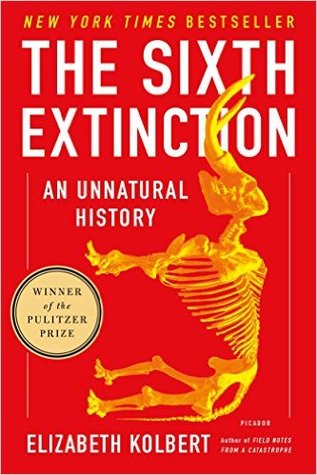More on this book
Community
Kindle Notes & Highlights
Read between
July 9 - August 8, 2023
Keep digging and mammals disappeared altogether from the fossil record. Eventually one reached a world not just previous to ours, but a world previous to that, dominated by giant reptiles.
In fact, the American mastodon vanished around thirteen thousand years ago. Its demise was part of a wave of disappearances that has come to be known as the megafauna extinction. This wave coincided with the spread of modern humans and, increasingly, is understood to have been a result of it. In this sense, the crisis Cuvier discerned just beyond the edge of recorded history was us.
“I have always thought that the great merit of the Principles was that it altered the whole tone of one’s mind,”
Toward the end of the Beagle’s voyage, Darwin encountered coral reefs. These provided him with his first major breakthrough, a startling idea that would ease his entrée into London’s scientific circles. Darwin saw that the key to understanding coral reefs was the interplay between biology and geology. If a reef formed around an island or along a continental margin that was slowly sinking, the corals, by growing slowly upward, could maintain their position relative to the water. Gradually, as the land subsided, the corals would form a barrier reef. If, eventually, the land sank away entirely,
...more
Discoscaphites jerseyensis probably had little spines poking out of its shell, which, Landman speculates, helped the animal appear larger and more intimidating than it actually was.
teeth, were wiped out, as were Hesperornithine birds, which were aquatic and for the most part flightless. The same goes for lizards and snakes; around four-fifths of all species vanished. Mammals’ ranks, too, were devastated;
Everything (and everyone) alive today is descended from an organism that somehow survived the impact. But it does not follow from this that they (or we) are any better adapted.
To Kuhn, the twentieth century’s most influential historian of science, the experiment was indeed paradigmatic: it revealed how people process disruptive information. Their first impulse is to force it into a familiar framework: hearts, spades, clubs. Signs of mismatch are disregarded for as long as possible—the red spade looks “brown” or “rusty.” At the point the anomaly becomes simply too glaring, a crisis ensues—what the psychologists dubbed the “’My God!’ reaction.”
(To geologists, an epoch is a subdivision of a period, which, in turn, is a division of an era: the Holocene, for instance, is an epoch of the Quaternary, which is a period in the Cenozoic.)
The Great Barrier Reef extends, discontinuously, for more than fifteen hundred miles, and in some places it is five hundred feet thick.


